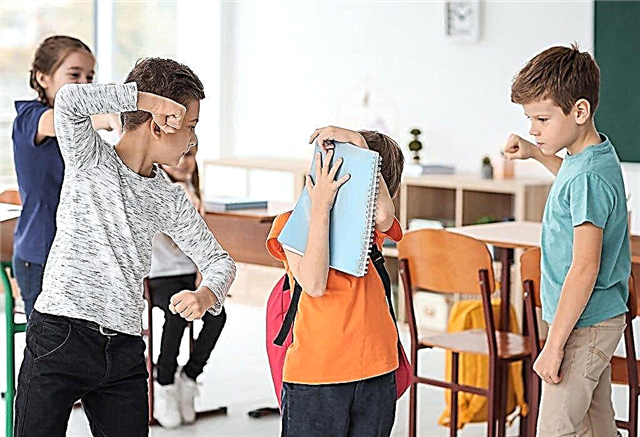
"Floxal" is a topical antibiotic that is prescribed for conjunctivitis, keratitis and other eye diseases provoked by harmful bacteria. Is it possible to use such a medicine in childhood and under what pathologies it will be effective, what dosages are prescribed for children and how long can it be treated with this remedy, how to replace "Floxal", if such a medicine could not be bought or an allergic reaction arose to it - to all these exciting questions can be found in this article.

Release form
"Floxal" is presented in pharmacies in two types of medicine.
- Eye drops. This form of the drug is a sterile transparent yellow solution. It is packaged in dropper bottles in the amount of 5 milliliters in one package.
- Eye ointment... This version of "Floxal" is a yellow homogeneous mass, packed in tubes of 3 grams.


Composition
Both versions of the drug contain ofloxacin as an active ingredient. Its amount in 1 gram of ointment and in 1 milliliter of drops is 3 mg, so the concentration of ofloxacin in each of the forms of the drug is 0.3%.
Additionally, the liquid medicine contains sodium chloride, hydrochloric acid and benzalkonium chloride. The drops also contain sterile water and sodium hydroxide. The ointment, in addition to ofloxacin, contains white petrolatum and wool fat, as well as liquid paraffin.
Mechanism of action
"Floxal" refers to antimicrobial drugs of the fluoroquinolone group with a fairly broad spectrum of effects. Under its influence, bacteria die, that is, this agent is bactericidal. The bacteria-destroying effect of "Floxal" is associated with the ability of ofloxacin to block enzymes in the cells of pathogens called DNA gyrases.
The drug has a high activity against most gram-negative microorganisms, among which there are Salmonella, Klebsiella, Chlamydia, Gonococcus, Citrobacter, Proteus, Mycoplasma and many other pathogenic agents.
"Floxal" also acts on some streptococci and staphylococci, and the sensitivity of pseudomonads, enterococci and pneumococci to this drug is called moderate. It should also be noted that anaerobic microbes are resistant to this medication, but they practically do not provoke eye diseases.

The healing effect of the use of "Floxal" appears quickly (the drug begins to act in 10 minutes) and lasts up to 6 hours. The agent penetrates well into the tissues of the eye, but is absorbed into the blood in a minimal amount, therefore such a drug has no systemic effect on the patient's body.
Indications
"Floxal" is prescribed for various eye infections caused by microorganisms that are sensitive to the drug. The medication is prescribed for:
- bacterial inflammation of the eyelids;
- purulent conjunctivitis;
- infection of the eyes with chlamydia;
- infectious inflammation of the cornea;


- barley;
- infectious inflammation of the lacrimal sac;
- the formation of an ulcer on the surface of the cornea.

It can also be used prophylactically, for example, to prevent bacterial complications from an eye injury or after eye surgery. Some ENT doctors prescribe "Floxal" in the nose with a bacterial rhinitis.
At what age is it prescribed?
Both forms of "Floxal" can be used in children from birth, if the doctor sees the need for such treatment. There are no separate children's forms of the drug - both ointment and drops are used in small patients in the same dosages as in adults.

Contraindications
Since the drug acts only locally, the only contraindication for "Floxal" is hypersensitivity to any of the components of the selected drug. For women, the medication is not recommended for breastfeeding and pregnancy, since its safety in such situations has not been sufficiently studied.
Side effects
The child's body can react to "Floxal":
- allergies;
- redness of the conjunctiva;
- uncomfortable sensations in the eyes;
- the appearance of itching of the conjunctiva;
- dry eyes;
- the appearance of burning eyes;
- the emergence of photophobia;
- increased lacrimation;
- dizziness.

If parents notice at least one of these symptoms, they should stop using the ointment or drops and show the little patient to the doctor.
Instructions for use
Treatment with Floxalom has the following features:
- before using the medicine, you need to wash your hands, and shake the bottle of drops;
- the liquid form is applied to each eye, one drop at a time, for which the lower eyelid is pulled down and, pressing on the bottle, the medicine is injected into the conjunctival sac;
- the ointment is placed behind the lower eyelid in the form of a strip approximately 1-1.5 cm long (for this, the eyelid is also pulled down);
- when the ointment is placed in the eye, you need to close the eyelids and move your eyes or lightly press your closed eyes with your fingers so that the drug is evenly distributed on the surface of the conjunctiva;
- the frequency of use of the medication is 2-3 times a day, but drops can be used up to 4 times a day, and with chlamydial infection, the treatment is performed 5 times;
- drops and ointment can be combined, but with this use, the ointment is laid last;
- sometimes the doctor prescribes to drip drops during the day, and lay ointment at night;
- the duration of treatment is no more than 14 days.


Overdose and drug interactions
Until now, there have been no cases of a negative effect of excess drops or ointment on the human body. Since the drug acts only at the site of application, it does not in any way affect the treatment with other drugs, however, when using several local remedies, it is necessary to drip or lay them in the eyes at intervals of 5 minutes.
Terms of sale and storage
You can buy "Floxal" only with a prescription, so before treatment with such a remedy, an ophthalmologist's consultation is required. The average price of a bottle of drops is 200 rubles, and one tube of ointment costs about 150 rubles.
It is recommended to keep the drug at home in a place hidden from children, where temperatures above +25 degrees will not act on the tube and bottle. The shelf life of the sealed "Floxal" is 3 years, but if the bottle or tube is opened, it is reduced to 6 weeks.

A month and a half after the first use, the medication must be thrown away, even if there is still a solution or ointment inside. The use of an expired medicine in children is unacceptable.
Reviews
The use of "Floxal" is generally well received. The advantages of the drug are considered the possibility of using it in children, a good therapeutic effect and rare side symptoms. Only rarely is the appearance of irritation, allergies or other negative effects of the medication mentioned. In a few reviews, there is no improvement after using drops or ointment. More often among the disadvantages are the high cost and short shelf life after opening the package.

Analogs
If you need to replace Floxal with a drug with the same active ingredient, your doctor may recommend Uniflox or Dancil drops. They also contain ofloxacin and can be used at any age for bacterial eye diseases. In addition, these drops are simultaneously ear drops and are prescribed for otitis media for children over 1 year old. Ofloxacin ointment can also be a substitute for Floxalu, but it is recommended to use it from the age of 15.
Instead of ofloxacin preparations, other fluoroquinolones can also be used, which have the same mechanism of action as Floxal. For example, an ophthalmologist can prescribe Oftaquix, L-Optic Rompharm or Signicef drops to a child. All of them contain levofloxacin and can be used in children over a year old. Drugs based on ciprofloxacin - "Tsiprolet" or "Tsipromed", are also in demand. They are also available in the form of eye drops and can be prescribed for eye infections from 1 year old.

In a situation where a child has a hypersensitivity to fluoroquinolones, for the treatment of conjunctivitis, barley and other bacterial eye lesions topical agents with another active substance can be used, for example:
- "Tobrex" is a medicine in drops that contains tobramycin and can be used in children of any age;
- "Vitabakt" - drops based on picloxidine, allowed from birth;
- "Oftadek" - antiseptic containing decamethoxin, which is used at any age;
- "Sofradex" - drops prescribed for children over 1 year old, which contain dexamethasone and two antibacterial components;
- "Sulfacil sodium" - a well-known drug from the group of sulfonamides, used even in newborns;
- Okomistin is an antiseptic agent based on miramistin, prescribed from the age of 3;
- "Levomycetin" - drops with antibacterial action, which can be used even in babies.
For how to drip drops into the eyes of a child, see the next video.



